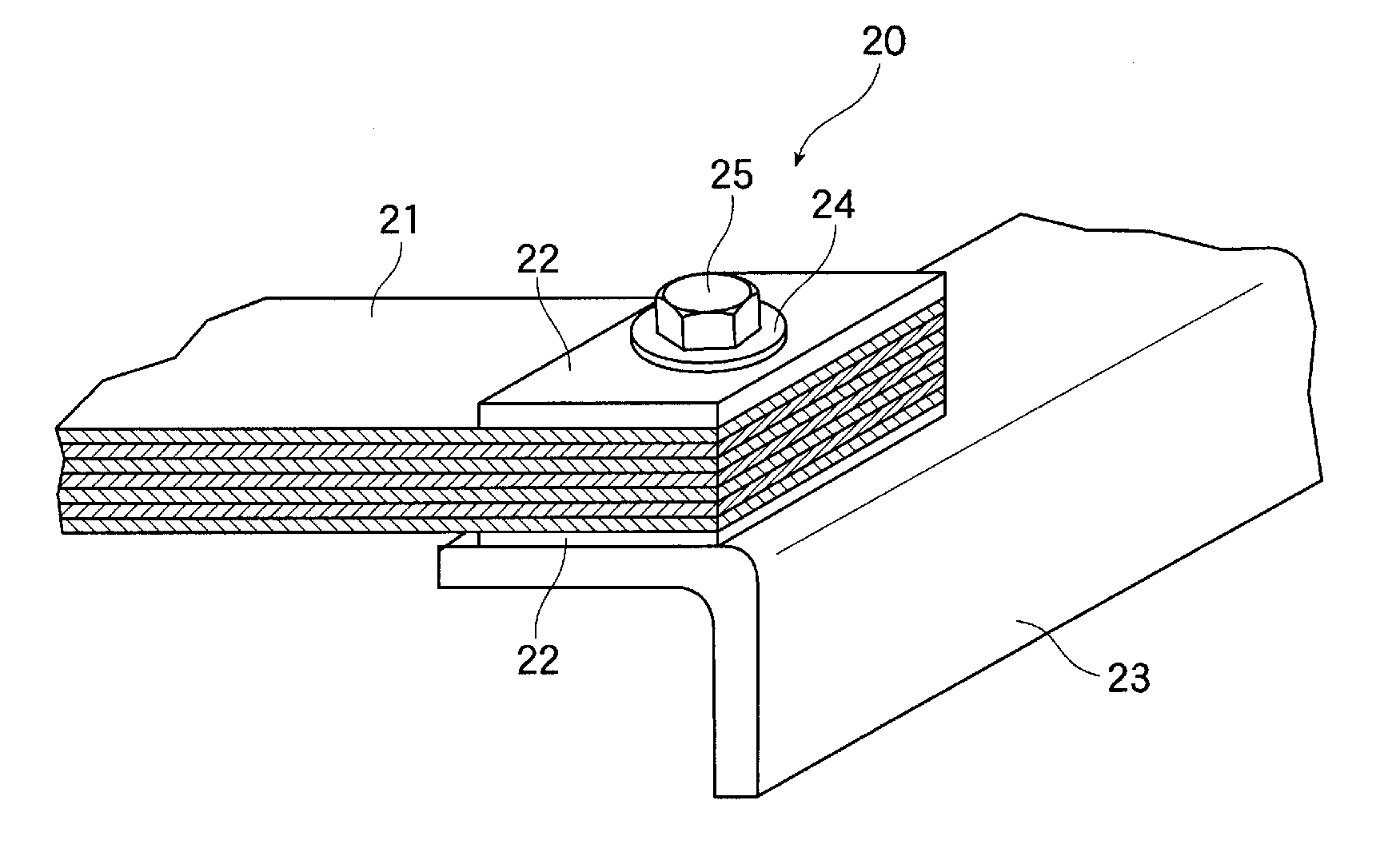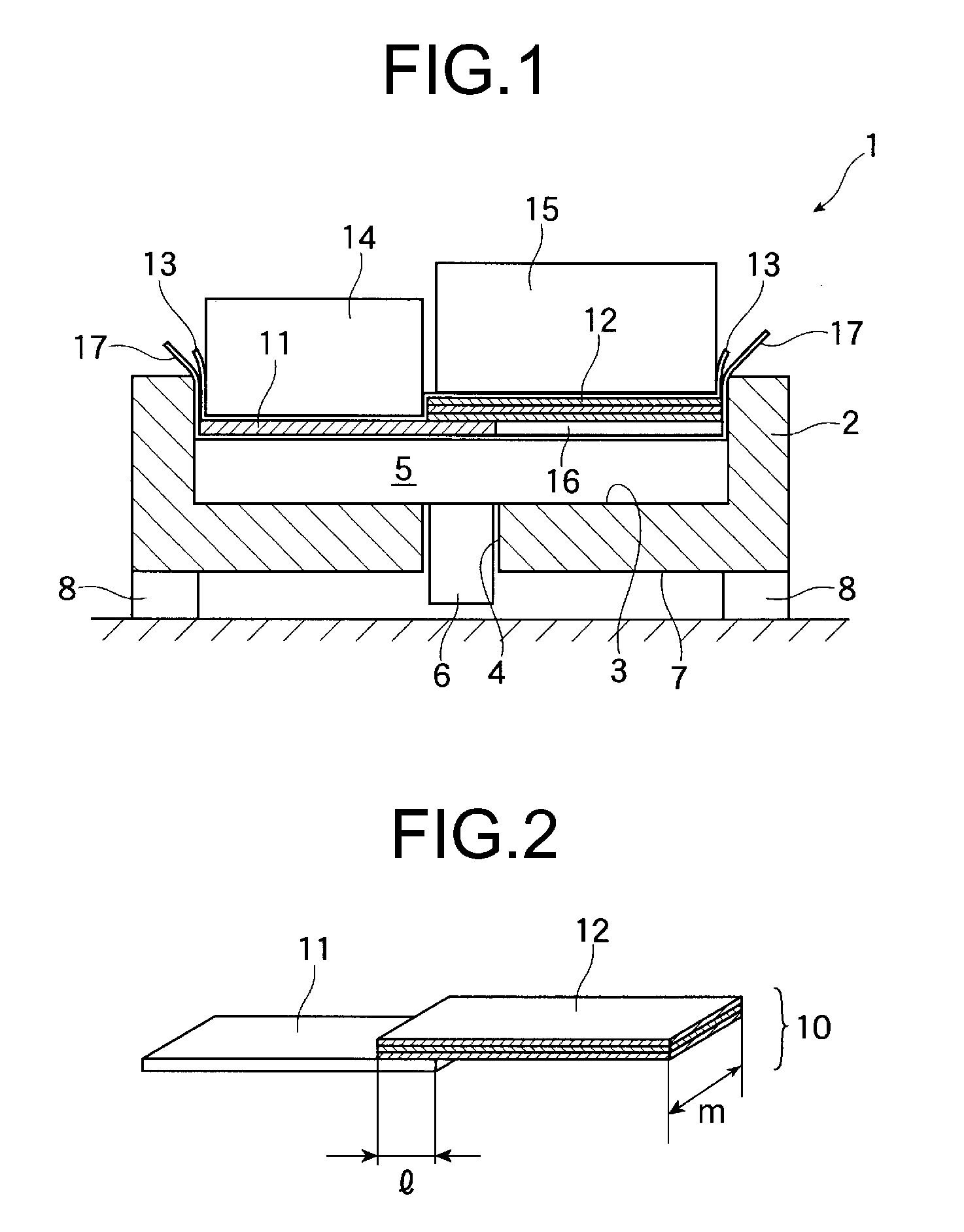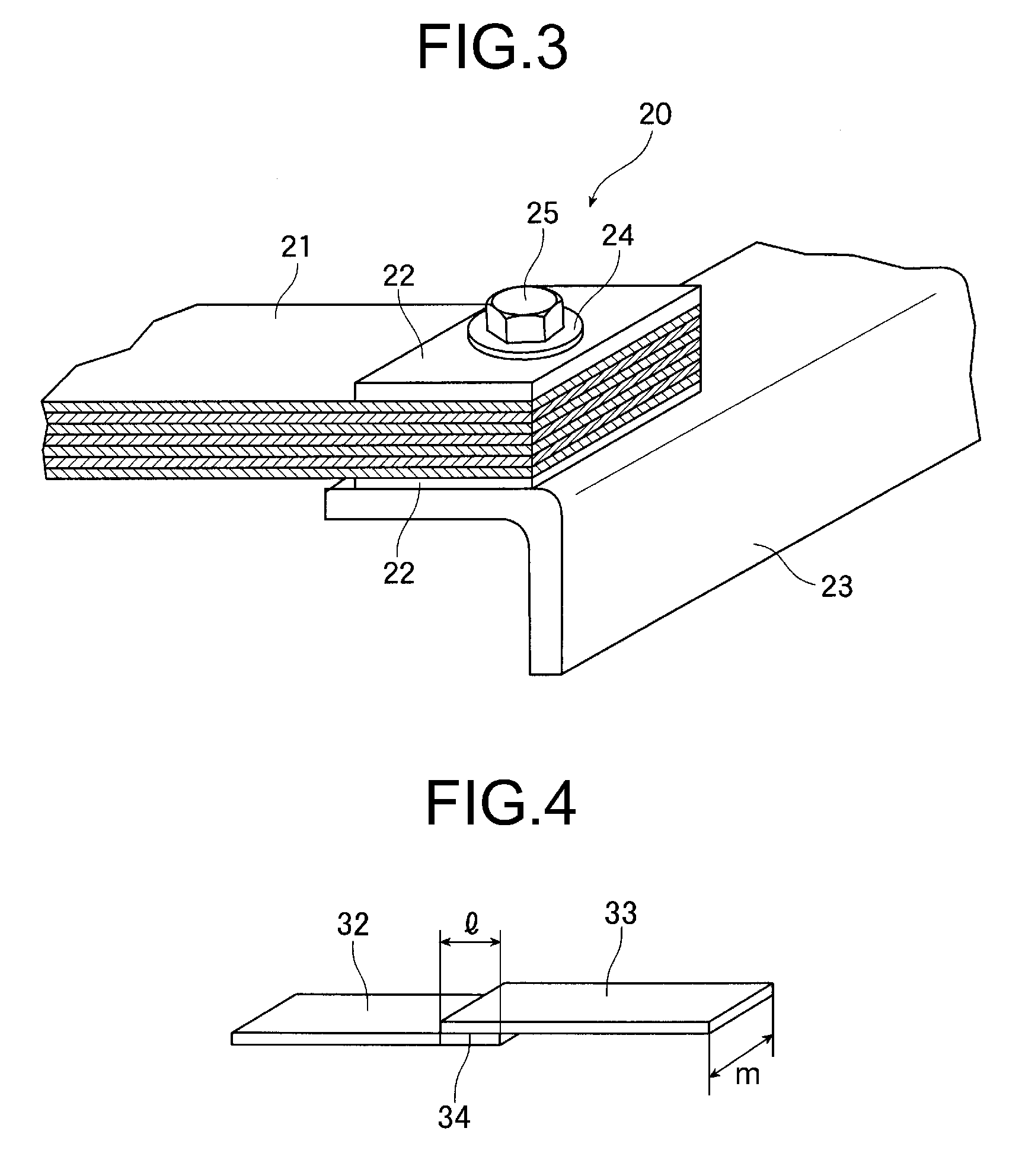Stainless steel composite and manufacturing method thereof
a technology of steel composite and manufacturing method, which is applied in the field of composites, can solve the problems of difficult to achieve the roughness of covering the entire surface, difficult to pull away, and difficult to catch resin on fine irregularities, etc., and achieves the effect of easy manufacturing, easy manufacturing, and easy production of large and/or elongated frp products
- Summary
- Abstract
- Description
- Claims
- Application Information
AI Technical Summary
Benefits of technology
Problems solved by technology
Method used
Image
Examples
experimental example 1
Stainless Steel and Adhesive
[0104]A 1-mm thick plate material of commercial stainless steel SUS316 was procured, and was cut into 45 mm×18 mm rectangular pieces. A degreasing aqueous solution was prepared in a dipping bath by heating, at a temperature of 60° C., an aqueous solution containing 7.5% of a commercially available degreasing agent “NE-6 (by Meltex, Tokyo, Japan)” for aluminum alloys. The stainless steel plate material was immersed for 5 minutes in the above aqueous solution, followed by thorough rinsing with water. Next, the stainless steel plate material was immersed for 1 minute in another dipping bath, having a 1.5% aqueous solution of caustic soda at 40° C., and was thoroughly rinsed with water thereafter. Treatment with a basic aqueous solution, though not essential, is a preliminary basic treatment previous to the subsequent treatment with sulfuric acid. This preliminary basic treatment results in a stable subsequent acid treatment. A 10% aqueous solution of 98% sul...
experimental example 2
Stainless Steel and Adhesive
[0108]Exactly the same experiment as in experimental example 1 was carried out using a 1 mm-thick plate material of stainless steel SUS316, but modifying the immersion time in the aqueous solution of sulfuric acid from 3 minutes to 6 minutes. Otherwise, the procedure was exactly the same as in experimental example 1. A tensile fracture test of the obtained integrated product illustrated in FIG. 4 yielded a shear fracture strength, averaged over four sets, of 56 MPa. That is, the pieces were bonded yet more strongly than in experimental example 1.
experimental example 3
Stainless Steel and Adhesive
[0109]A 1-mm thick plate material of commercial stainless steel SUS304 was procured, and was cut into 45 mm×18 mm rectangular pieces. A degreasing aqueous solution was prepared in a dipping bath by heating, to a temperature of 60° C., an aqueous solution containing 7.5% of a commercially available degreasing agent “NE-6 (by Cemedine)” for aluminum alloys. The stainless steel plate material was immersed for 5 minutes in this degreasing agent aqueous solution, followed by thorough rinsing with water. Next, the stainless steel plate material was immersed for 1 minute in another dipping bath of a 1.5% aqueous solution of caustic soda at 40° C., and was rinsed with water thereafter. A 10% aqueous solution of 98% sulfuric acid was prepared next at 65° C. The stainless steel plate pieces were immersed for 3 minutes in the aqueous solution, and were then thoroughly rinsed with deionized water. The pieces were then immersed for 3 minutes in a 3% aqueous solution o...
PUM
| Property | Measurement | Unit |
|---|---|---|
| Temperature | aaaaa | aaaaa |
| Percent by mass | aaaaa | aaaaa |
| Percent by mass | aaaaa | aaaaa |
Abstract
Description
Claims
Application Information
 Login to View More
Login to View More - R&D
- Intellectual Property
- Life Sciences
- Materials
- Tech Scout
- Unparalleled Data Quality
- Higher Quality Content
- 60% Fewer Hallucinations
Browse by: Latest US Patents, China's latest patents, Technical Efficacy Thesaurus, Application Domain, Technology Topic, Popular Technical Reports.
© 2025 PatSnap. All rights reserved.Legal|Privacy policy|Modern Slavery Act Transparency Statement|Sitemap|About US| Contact US: help@patsnap.com



